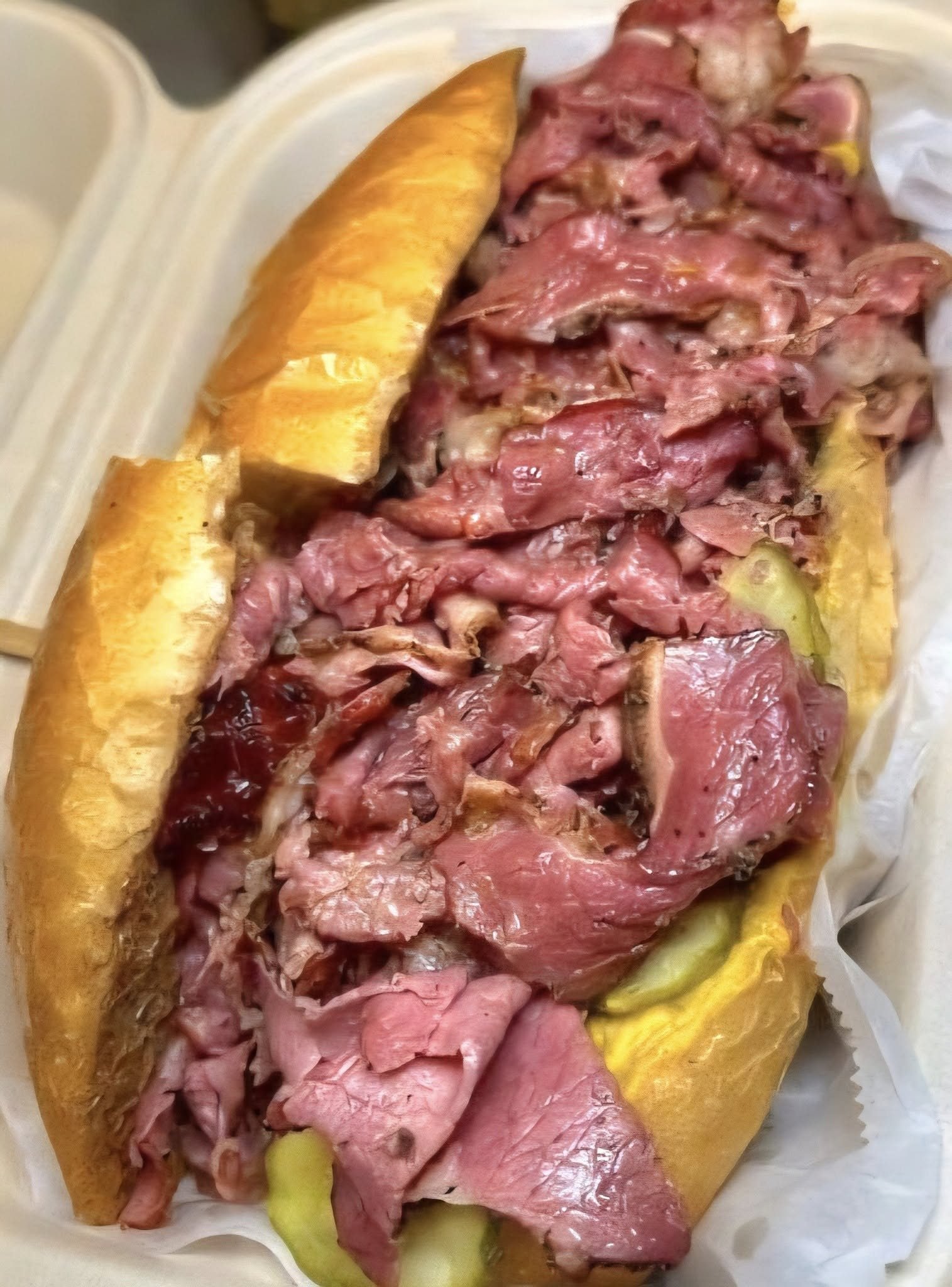Pastrami on Rye
Few sandwiches can claim the cultural stature and culinary punch of Pastrami on Rye. More than just lunch, this deli icon is a story of immigration, tradition, and the art of simple yet unforgettable food. Every bite speaks of smoky meat, bold seasoning, briny pickles, and the earthy chew of rye bread. While its roots lie in Eastern European Jewish kitchens, the sandwich has become a beloved staple of American delis, especially in New York City, where towering stacks of pastrami between thick slices of rye are a rite of passage.
The Heart of the Sandwich
At the core is pastrami—beef brisket or navel cured in a spiced brine, coated in a peppery crust, smoked to perfection, then steamed until fork-tender. Pastrami differs from corned beef in its treatment: both start with cured beef, but pastrami’s smoking and spice crust add layers of depth that make it both savory and slightly sweet, smoky yet delicate.
Pairing this rich meat with rye bread isn’t accidental. Rye has a subtle bitterness that counters the fat of the beef, while caraway seeds in the loaf echo the spice rub. A swipe of mustard ties it together with heat and tang. That’s all it needs—though deli traditions often add a pickle on the side for crunch.
Ingredients (Makes 4 Sandwiches)
For the Sandwich:
-
1 ½ pounds sliced pastrami (from the deli counter or homemade)
-
8 slices fresh rye bread (seeded, if available)
-
4 tablespoons deli-style mustard (spicy brown or yellow, depending on taste)
-
Kosher dill pickles, for serving
Optional Additions:
-
Swiss cheese slices (for a pastrami Reuben variation)
-
Sauerkraut or coleslaw
-
Russian dressing (if going down the Reuben path)
Step One: Sourcing or Preparing Pastrami
If you’re lucky enough to live near a classic Jewish deli, fresh pastrami is as easy as stepping to the counter. But if you’re preparing at home, you can start with a brisket flat cured in a mixture of salt, sugar, garlic, coriander, mustard seed, and peppercorns for a week. After curing, it’s coated with black pepper and coriander, smoked low and slow, then steamed until supple. The process is lengthy, but the reward is meat that practically melts on the tongue.
Step Two: Heating the Pastrami
Cold pastrami has flavor, but warm pastrami is transformative. Gently steam the slices over simmering water for 5–7 minutes, or until heated through. This revives its juiciness without drying it out. Some delis keep pastrami in steam trays for hours, ensuring each order is served hot and tender.
Step Three: Building the Sandwich
Lay two slices of rye bread on a cutting board. Spread a modest but assertive layer of mustard across one slice—enough to give zing without overwhelming the meat. Pile on a generous portion of steaming pastrami, stacking it high and loose rather than pressing it flat. The sandwich should feel abundant, almost teetering. Top with the second slice of bread and cut in half, preferably on the diagonal.
Step Four: Serving
Tradition demands a pickle spear alongside the sandwich. The salty crunch resets the palate between bites of smoky, spiced beef. Potato chips or a scoop of deli slaw are natural accompaniments. In a true New York deli, the sandwich arrives on wax paper, with the pickle taking equal pride on the plate.
Variations
-
Pastrami Reuben: Add Swiss cheese, sauerkraut, and Russian dressing, then griddle the sandwich until the bread is crisp and the cheese melts.
-
Rachel Sandwich: Swap sauerkraut for coleslaw—creamier, slightly sweeter, but equally indulgent.
-
Breakfast Twist: Top rye bread with pastrami, fried egg, and melted cheese for a hearty morning meal.
Cultural Footprint
Pastrami on Rye isn’t just about flavor; it’s about heritage. Jewish immigrants in the late 19th century brought preserved meats and rye baking traditions to America. Delis blossomed, particularly in New York, where neighborhoods thrived around them. Katz’s Delicatessen, famous for its hand-cut pastrami, made the sandwich legendary. Movies, novels, and pop culture references turned Pastrami on Rye into a symbol of authenticity and nostalgia.
The sandwich also embodies balance—nothing fancy, just bread, meat, and mustard—but each element matters. Rye bread must be fresh and sturdy enough to hold its filling. Mustard should be sharp enough to cut the richness. Pastrami should be warm, tender, and spiced in every bite. Remove any one piece, and the whole character of the sandwich shifts.
Final Thoughts
Pastrami on Rye proves that a sandwich can be more than a quick bite. It is craftsmanship layered between slices of bread. It’s the kind of food that feels both familiar and celebratory, connecting generations across deli counters and family tables. Whether eaten at a bustling New York deli, at home with carefully sourced ingredients, or improvised with store-bought pastrami, the result is still soul-satisfying.
It may be humble in construction, but it is grand in presence. Few sandwiches are so simple yet so commanding. When the rye’s bite meets the smoky pastrami and mustard tang, you don’t just eat—you participate in a tradition. Pastrami on Rye isn’t just a sandwich; it’s an experience, and one that continues to hold its rightful place in the pantheon of classic comfort foods.
